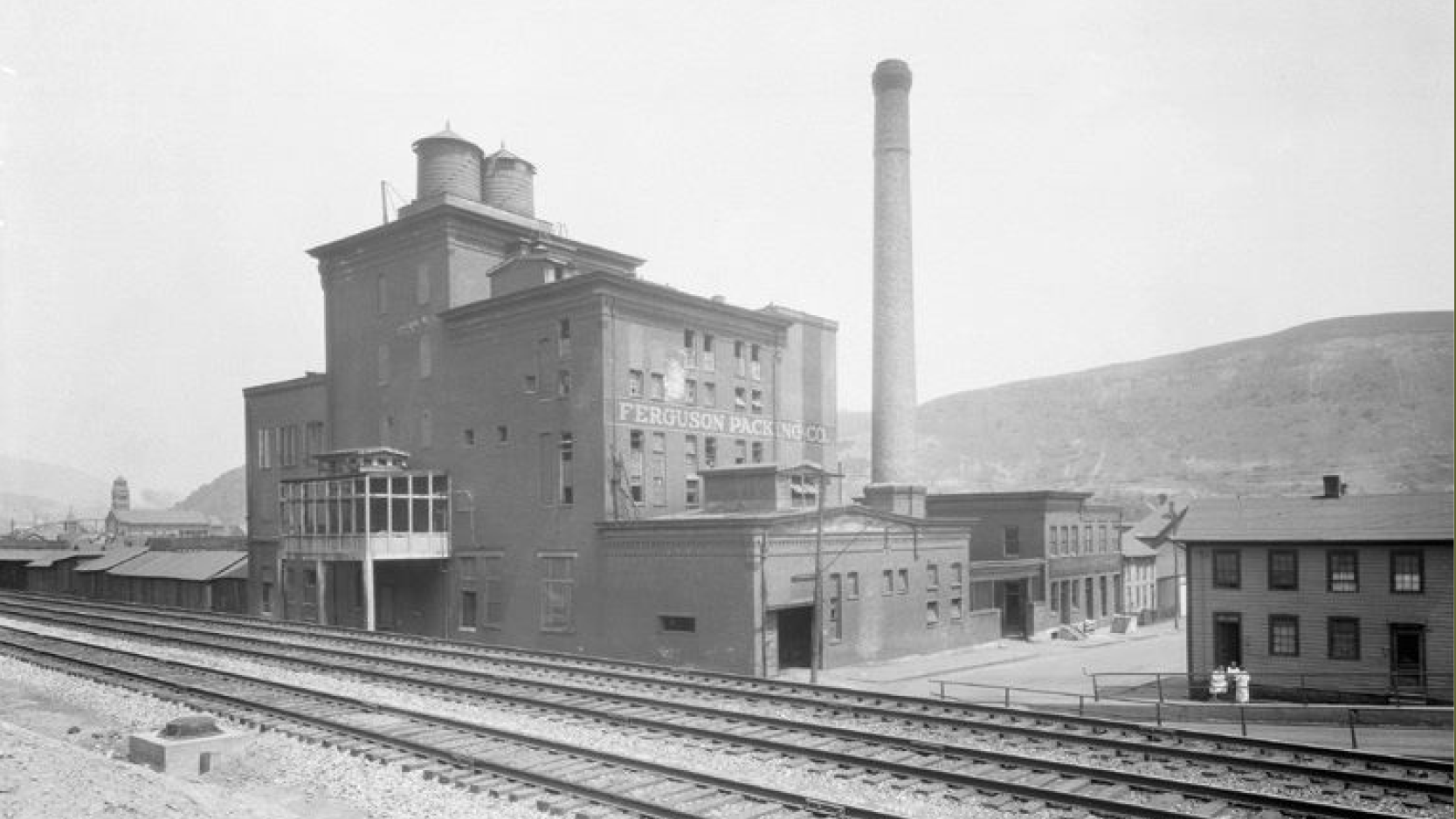A history of industry and innovation across the Alleghenies

By Jodie Dello Stritto
The Alleghenies has a rich history of innovation and industry, reflecting the broader industrial revolution as well as advances in agriculture, tech, transportation, materials, tourism and more. Here are a few examples from counties across the region.
Blair County serves as a hub with a strategic location
Blair County was an early hub for transportation and manufacturing, thanks to its strategic location in the Allegheny Mountains. One of the earliest and most significant innovations was the development of the Allegheny Portage Railroad in the 1830s. This engineering feat connected the eastern and western parts of Pennsylvania, facilitating the movement of goods and people across the state. The railroad bolstered local industries and played a crucial role in the national transportation network.
Altoona emerged as a center for railroad-related manufacturing. The Pennsylvania Railroad’s Altoona Works, established in 1850, became one of the largest railcar manufacturing facilities in the world, employing thousands and driving economic growth.
Blair County transitioned from its industrial roots to embrace new forms of innovation. Companies like Sheetz, founded in Altoona in 1952, have become leaders in retail and service innovation, known for their cutting-edge technology and customer-centric business models.
Cambria County’s critical role in steel and coal
Cambria County is best known for its critical role in the steel and coal industries, which fueled the nation’s growth in the 19th and early 20th centuries.
Johnstown was a major player in the early steel industry. The Cambria Iron Company, founded in 1852, became one of the most technologically advanced steel mills of its time. Innovations in steel production, such as the Bessemer process, were implemented here, making Johnstown a key supplier of steel for railroads, construction, and infrastructure across the country. In addition to steel, Cambria County was rich in coal, which powered the steel mills and fueled the economy. Mining operations were central to the region’s identity for decades.
Today, while the heavy industries of the past have largely declined, Cambria County has redefined itself through innovation in technology and healthcare. Companies like Concurrent Technologies Corporation, based in Johnstown, are leaders in advanced manufacturing and defense contracting, showcasing the region’s shift toward a diversified, knowledge-based economy.
Bedford County: A frontier outpost
Bedford County’s strategic location and natural resources made it an important player in early American history as a frontier outpost and later as a key stop along major transportation routes.
In the 18th and 19th centuries, Bedford County’s economy was primarily agricultural, with farming and milling as the dominant industries. However, its location along the Forbes Road, a critical colonial route that later became part of the Lincoln Highway, made it a vital hub for trade and travel. The development of Bedford Springs Resort in the early 1800s, capitalizing on the area’s natural mineral springs, was an early example of the county’s innovative approach to leveraging its natural assets. The resort became a prestigious destination, drawing visitors including U.S. presidents and other dignitaries.
Bedford County continues to innovate, particularly in manufacturing and tourism. The county became known for its production of glass, textiles, and other goods, manufacturing facilities driving local employment and economic growth.
Today, Bedford County balances its rich industrial heritage with a focus on modern innovation. The county is home to several advanced manufacturing companies, such as Bedford Reinforced Plastics, which specializes in composite materials used in various industries. Additionally, the tourism industry remains strong, with attractions like Old Bedford Village and the revitalized Bedford Springs Resort continuing to draw visitors.
Huntingdon County has become a hub of diversity
Huntingdon County was also shaped by its natural resources and strategic location along key transportation routes. The county has evolved from its early roots in agriculture and iron production to become a hub for diverse industries.
In the 19th century, the Juniata River and the Pennsylvania Canal were crucial to Huntingdon County’s economic development. These waterways facilitated the transport of goods, particularly iron, which was abundant in the region. Iron furnaces and forges, such as Greenwood Furnace, played a significant role in supplying materials for the burgeoning railroads and other industries. The county’s iron industry thrived during this period, contributing to Pennsylvania’s reputation as the “Workshop of the World.”
The arrival of the Pennsylvania Railroad further accelerated industrial growth, making Huntingdon a key stop along the route. The railroad not only enhanced transportation but also supported the growth of manufacturing and other industries in the region.
In the 20th century, the county diversified its industrial base, with the development of manufacturing sectors including textiles, plastics, and metal fabrication. Companies like Bonney Forge, a leading manufacturer of fittings and valves, became prominent, demonstrating the county’s continued commitment to industrial innovation.
Today, Huntingdon County boasts innovation in advanced manufacturing and technology. The presence of Juniata College, known for its strong science and engineering programs, further supports the county’s reputation as a place where tradition and innovation intersect.
Centre County is a center of agriculture and Penn State expertise
Centre County has a dynamic history of innovation and industry, deeply influenced by Penn State and natural resources. The county has long been a center for agricultural and industrial activity, with a strong tradition of harnessing local resources to drive economic growth.
In the 19th century, the discovery of iron ore in the region led to the development of iron furnaces and forges, such as the Curtin Ironworks, which became a vital part of the county’s economy. The abundance of iron ore and timber for charcoal production made Centre County a significant player in Pennsylvania’s early iron industry, supplying materials for tools, machinery, and the expanding railroad network.
The establishment of Penn State in 1855 marked a turning point for Centre County, fueling innovation and economic development. Penn State became a hub for agricultural research and education, helping to modernize farming practices not only in Centre County but across the state. The university’s emphasis on research and technology has since spurred the growth of various industries, particularly in fields like agriculture, engineering, and materials science, for which it ranks first nationally.
Today, Centre County continues to lead in innovation, with Penn State’s Innovation Park serving as a catalyst for high-tech startups and research-driven businesses. Companies in sectors such as biotechnology, renewable energy, and advanced manufacturing are thriving in the region, supported by the university’s resources and talent.
Somerset County’s shift to sustainability
Somerset County’s early economy was driven by agriculture, timber, and the extraction of natural resources, particularly coal.
In the 19th and early 20th centuries, Somerset County became a hub for coal mining and related industries. The discovery of bituminous coal in the region led to the development of numerous mines, which supplied fuel for the burgeoning steel industry in nearby Pittsburgh and beyond. The influx of railroads further boosted the county’s economy, facilitating the transportation of coal and other goods. This industrial boom not only transformed Somerset County into a significant coal producer but also spurred the growth of towns and infrastructure throughout the region.
Somerset County is also known for its connection to the Flight 93 National Memorial. The memorial has become a symbol of resilience in the face of adversity. The development of the memorial and the surrounding parklands has also contributed to the county’s growing tourism industry.
Today, Somerset County continues to innovate, particularly in the fields of renewable energy and advanced manufacturing. The county is home to wind farms and solar projects, reflecting its shift towards sustainable energy production. Companies in the manufacturing and technology sectors are also growing, leveraging the region’s skilled workforce.


